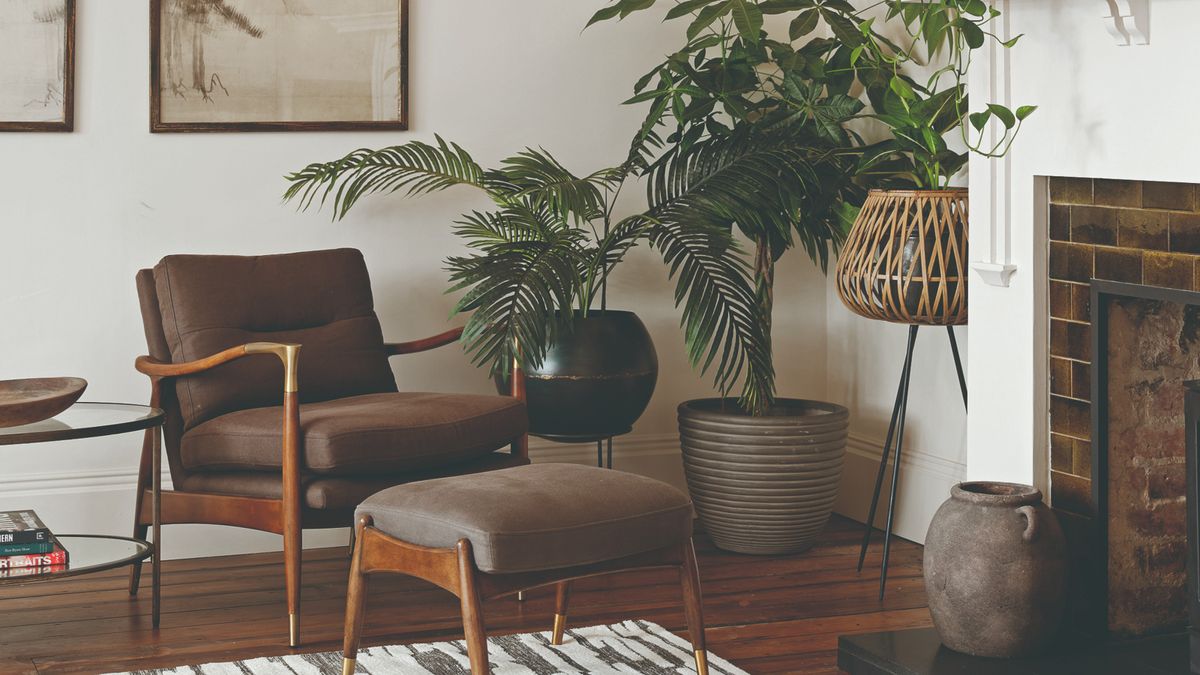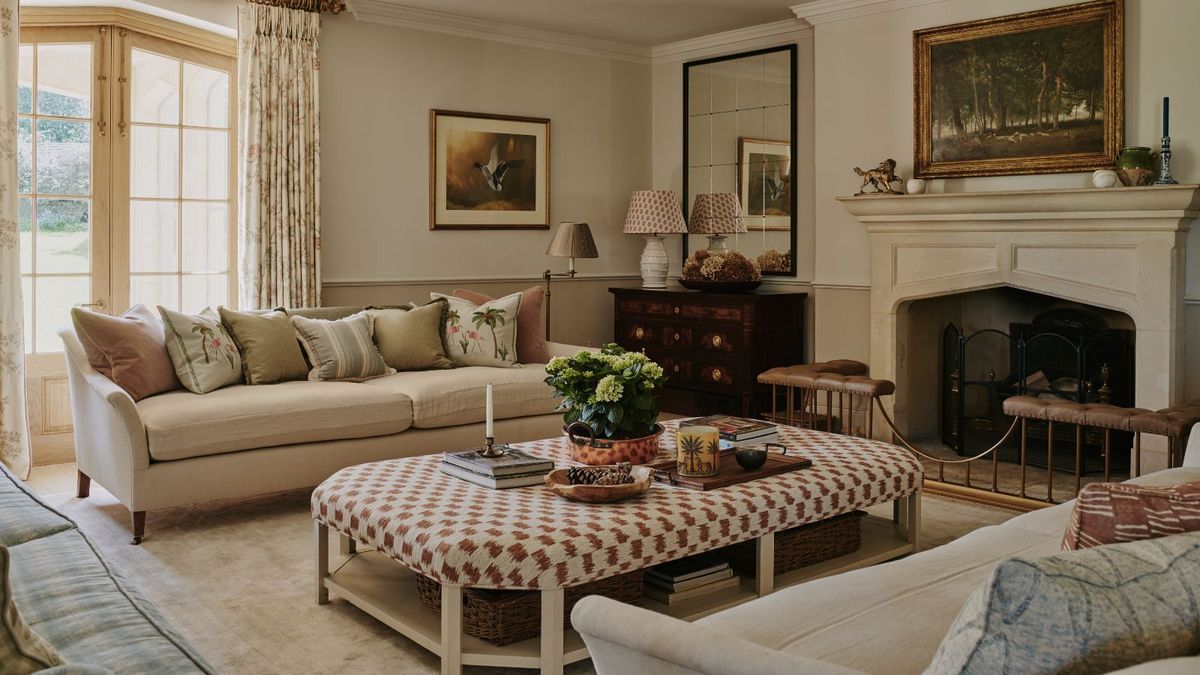7 Common Living Room Lighting Mistakes to Avoid at all Costs
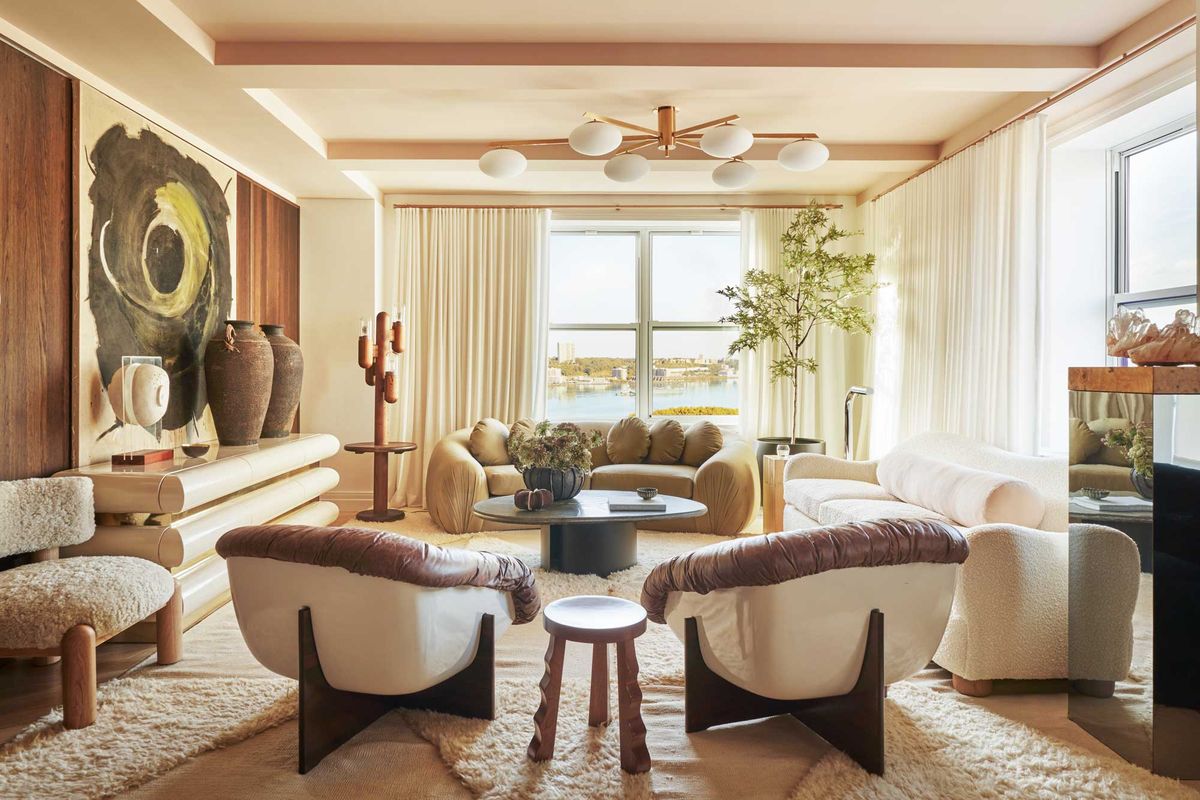
There are certain living room lighting mistakes you need to steer well clear of if you are dreaming of designing a relaxing space to unwind in.
Increasingly, homeowners are looking for living room lighting ideas that cater to a range of activities. Just like kitchens, it’s a room that needs to fulfil multiple purposes — not only as a space to kick back and relax at the end of the day, but also as a quiet spot to curl up with a good book, as a family area to spend quality time together, and as a buzzing sociable space to host friends.
Of course what all this means is that a really considered approach needs to be taken, not only to the furniture we choose to put in it, but also in the way that it is lit. So, to help you avoid making costly mistakes, we asked the experts for the most common living room lighting mistakes they see homeowners making, to ensure your living room illumination delivers everything you need.
1. Failing to plan in advance
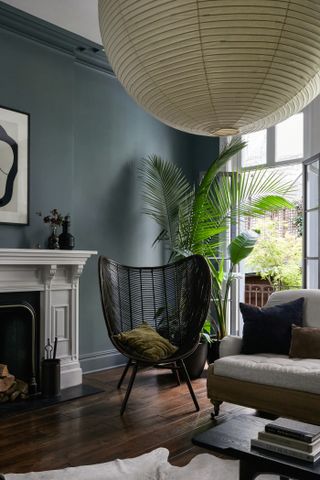
(Image credit: Bespoke Only)
Planning your house’s lighting scheme should never ever be left as an afterthought. If there is one aspect of home design that needs to be at the top of your priority list, it is this.
“When it comes to living room lighting, the first mistake people typically make is leaving lighting decisions to the last minute — this has the potential to throw off the whole room’s design,” explains Trudie Styles, interior project consultant at Joseph Giles. “It’s best to consider lighting from the start.”
If you are struggling when it comes to knowing how to plan living room lighting, Trudie recommends you start by “Deciding which areas and features of the room you want to highlight first. From there, you can choose lighting that elegantly spotlights the room’s most impactful features and place them accordingly. Better yet, pre-consider the number of switches, circuits, and lighting features you’d like to incorporate. For instance, you might try some lighting on timers or make them dimmable. This gives you more control over the resulting ambience of the room.”
Equally, don’t forget to factor in how many lights you should have in a living room, says Trudie. “A common mistake is not taking into consideration how many (or how few) lights actually need to be installed for you to achieve the desired effect.”
2. Under-prioritizing lighting design
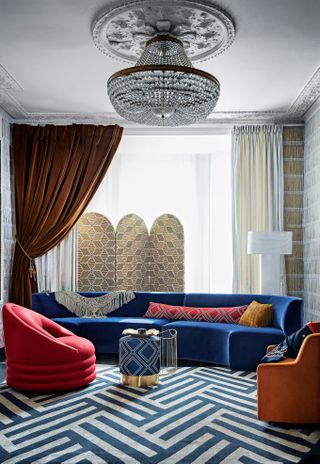
(Image credit: Jon Day)
When it comes to your living room ideas, you need to think of it as a whole when planning the decor scheme. What this means is ensuring your overall budget will stretch to all aspects — including your lighting.
“A major mistake people will make when lighting their living rooms is allocating more of their budget to their furnishings under the impression this will have the biggest impact on their space,” says Trudie Styles. “This isn’t always the case. Even expensive, well-crafted furnishings can have their beauty masked if lighting is insufficient or harsh. Depending on the piece, you can make furniture look significantly more premium and upscale if flattering lighting choices are used.”
3. Using lights that are too bright
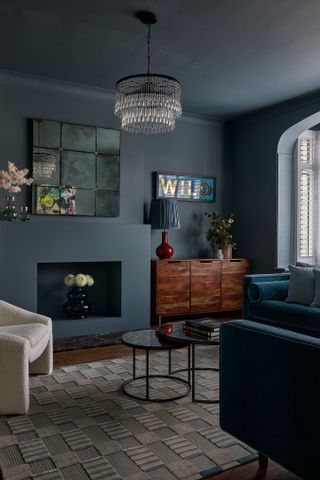
(Image credit: Folds Inside)
Overly bright lighting is definitely not welcome when it comes to cozy living room ideas — this is a room in which to create a warm, relaxing, and welcoming atmosphere and, as such, there is no place for glaring light.
“A mistake I often see with living room lighting is using harsh and overly bright lights,” says Ana Coddington, lead interior designer for Archival Designs. “This can make the space feel more like a ‘cold’ office or showroom rather than a place to relax and hang out.”
Living room lighting mistakes can prevent a room from feeling welcoming and comfortable, says Ana. “It should be able to cater to both functional needs — like reading or entertaining — and create a relaxing atmosphere when it’s time to unwind.
“To achieve this, I suggest using a dimmer,” she adds. “This way you can control the intensity of the light depending on the mood you want to go for, whether you’re hosting guests or just chilling out.”
In addition to adding a level of adjustability, you also need to be careful with the layout of your overhead lighting. “Using a uniform grid of downlights is a common mistake that creates a bland, overly bright environment that lacks character,” warns Sabrina Fiorina, EU design director at John Cullen Lighting.
“Not all areas in a room need the same amount of light,” she adds. “A grid approach can over-light some zones while failing to adequately illuminate areas where focused task or accent lighting is needed. It wastes energy and reduces functionality if the room layout changes, whilst also missing opportunities to highlight architectural features.”
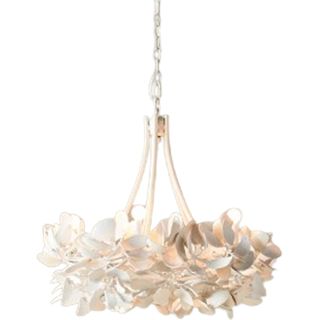
Magnolia Coconut Chandelier
Price: $1,098
Turn your living room background lighting into a feature with this stunning chandelier, inspired by the shape of a magnolia and made using powder-coated coconut shells.
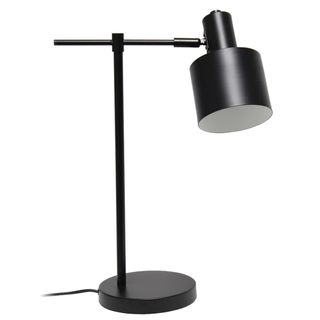
Price: $84.99
With its modern matte black finish, this neat little table lamp would be perfect for creating a cozy corner within a modern living room. It is adjustable too making it perfect for a number of uses.

Govee White LED Strip Lights
Price: $19.99
LED strip lights come in so useful as a way of highlighting architectural features or drawing attention to decorative objects. These are dimmable and easy to fit.
4. Relying on a single source of light
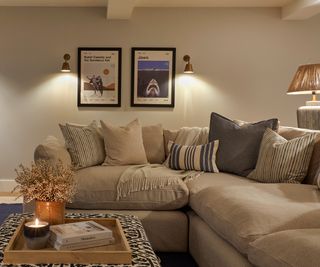
(Image credit: Claire Garner Design Studio; Photography: Sarah Griggs)
The very last thing you want in your living room is a space that feels cold and unwelcoming — which is exactly the effect that can be expected if you rely on a single, overhead light source. Thankfully when it comes to working out how to light a living room without a ceiling light, there are plenty of options out there.
“Relying solely on ceiling fixtures creates flat, unflattering light, and harsh shadows,” explains Luke Johnson-Flint, a product designer and co-founder of Lutris. “It’s much better to layer a space with ambient, task and accent lighting.”
“Avoid using just one light source,” agrees Ana Coddington. “Instead, layer your lighting with a mix of overhead lights, table lamps, and floor lamps. This can help create depth and warmth in the room without making it feel too stark.”
Interior designer at Mastuvu Design, Chloe Wang, wholly agrees. “Relying solely on overhead lighting (also known as ‘the big light’) is a frequent living room design blunder,” she says. “This creates harsh shadows and gives off an overall uninviting atmosphere. The fix is layering your lighting. Incorporate floor lamps, table lamps and wall sconces to create a mix of ambient, task and accent lighting.”
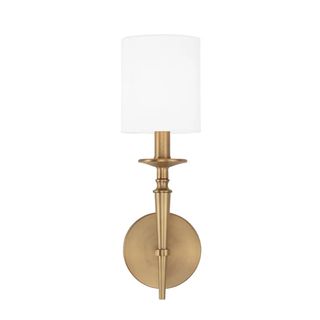
Eastbourne Steel Wallchiere
Price: $132.99, Was: $195
Perfect for injecting a little warmth and traditional style into your living room, we love the aged brass design of this wall sconce. It is dimmer switch compatible and we think a pair either side of a mirror or piece of art would be perfect.
5. Forgetting the many uses of the space
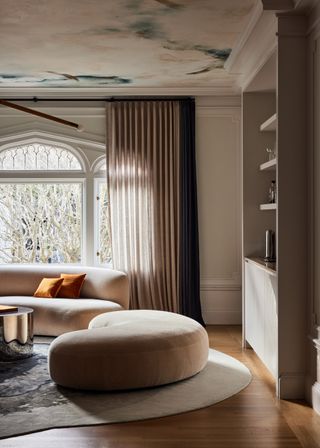
(Image credit: Nicole Franzen, Styling: Rosy Fridman. Design: Homework)
When developing a lighting scheme for your living room you need to think through each and every way you plan on using the space. Once you have carefully considered this, you will be in a much stronger position to decide the best way to light it. In general, in any kind of multi-functional room, a flexible approach is best.
“Aside from aesthetic considerations, another common misstep is choosing lighting that’s ill-suited for the room,” says Trudie Styles. “For instance, if you have a desk area in your living room, opt for task lighting or a well-positioned, angled floor lamp rather than a pendant or sconce. Bear in mind the typical purposes of your living room — is it primarily for relaxing, entertaining, or both? Asking yourself these questions as well as the type of atmosphere you want to create will help direct you to the types of lighting to implement.”
If you are still struggling to come up with a lighting scheme that caters for all the ways you will use the living room, Sabrina Fiorina recommends you “Focus on zones within the space and consider how each will be used to apply the most effective lighting. Focus light onto key features such as artwork, furniture or flowers to add drama to the space, and ensure everything is able to be dimmed to create the perfect ambience.”
She also recommends you consider different scenes and how you’ll control the light throughout. “Much thought is given to filling the room with bright light for the daytime, but often little consideration is given to circuiting and dimming for a transition to an evening scene,” she says.
6. Leaving corners in the dark
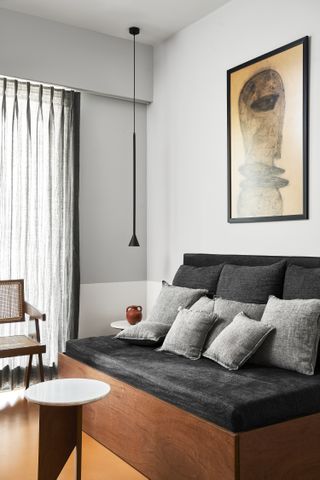
(Image credit: SML Architects)
While it is tempting to focus all your efforts on ensuring the entire space is well lit, don’t forget to light up those lesser-used spots too. In addition, be sure to familiarize yourself with the types of lighting to avoid if you want to make your home feel cozy.
“Dark, unused corners can make your living room feel smaller and less welcoming,” points out Chloe Wang. “Add a stylish floor lamp or uplight a large plant in darker areas. You could also consider a piece of statement lighting with a sculptural quality to add visual interest.”
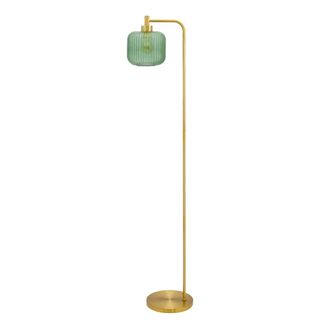
Gracieleigh 63″ Arched Floor Lamp
Price: $133.99, Was: $148.99
Managing to be elegant and striking all at once, this arched floor lamp is perfect for giving a gloomy corner a cozy glow. The ribbed glass shade won’t create any harsh glare either.
7. Leaving the space feeling cold with clinical lighting
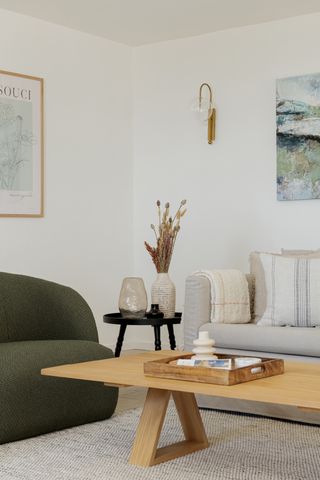
(Image credit: August / Pete Helme Photography)
We cannot emphasize the importance of getting color temperature enough when it comes to getting living room lighting right. Get it wrong and no matter how beautiful your fixtures, the entire effect will be ruined.
“Lighting with the wrong color temperature can dramatically alter the mood of the rooms,” explains Sabrina Fiorina. “Cool blue-toned light such as 4000K (Kelvins) can make a space feel sterile and flat, while yellow toned lights, such as 2700K create a cozy, inviting atmosphere. It’s important to choose the right temperature for the function of the space; cool light for tasks, warm light for relaxation.”
Chloe Wang adds that “Using mismatched bulb colors (warm vs. cool tones) can really disrupt the harmony of the room” and that “it’s important to be consistent, so stick to the same color temperature across all your fixtures.”
Be sure to take a look at the latest living room color trends too — they will cement a cozy feel in this space.
FAQs
Furniture positioning or lighting design — which comes first?
When planning a lighting scheme it can be tricky to know the best order to do things in. Luckily, when it comes to furniture placement rules and lighting, Sabrina Fiorina has some advice.
“Designing lighting without a confirmed furniture layout can result in poorly placed fixtures that fail to highlight key features or provide adequate illumination where it’s needed,” she says. “Always plan your lighting around the final furniture arrangement to create focal points, accentuate architectural details, and ensure functional lighting.
“Often, people also overlook the importance of planning for future additions, such as cabinetry or shelving that will require lighting,” continues Sabrina. “To avoid this, install circuit points during the initial wiring phase, even if the joinery isn’t installed yet. This allows you to seamlessly add lighting later without major disruptions.”
Nailed your living room lighting design? Make sure you know the kitchen lighting design rules too, for a space that is both practical and stylish.
link

